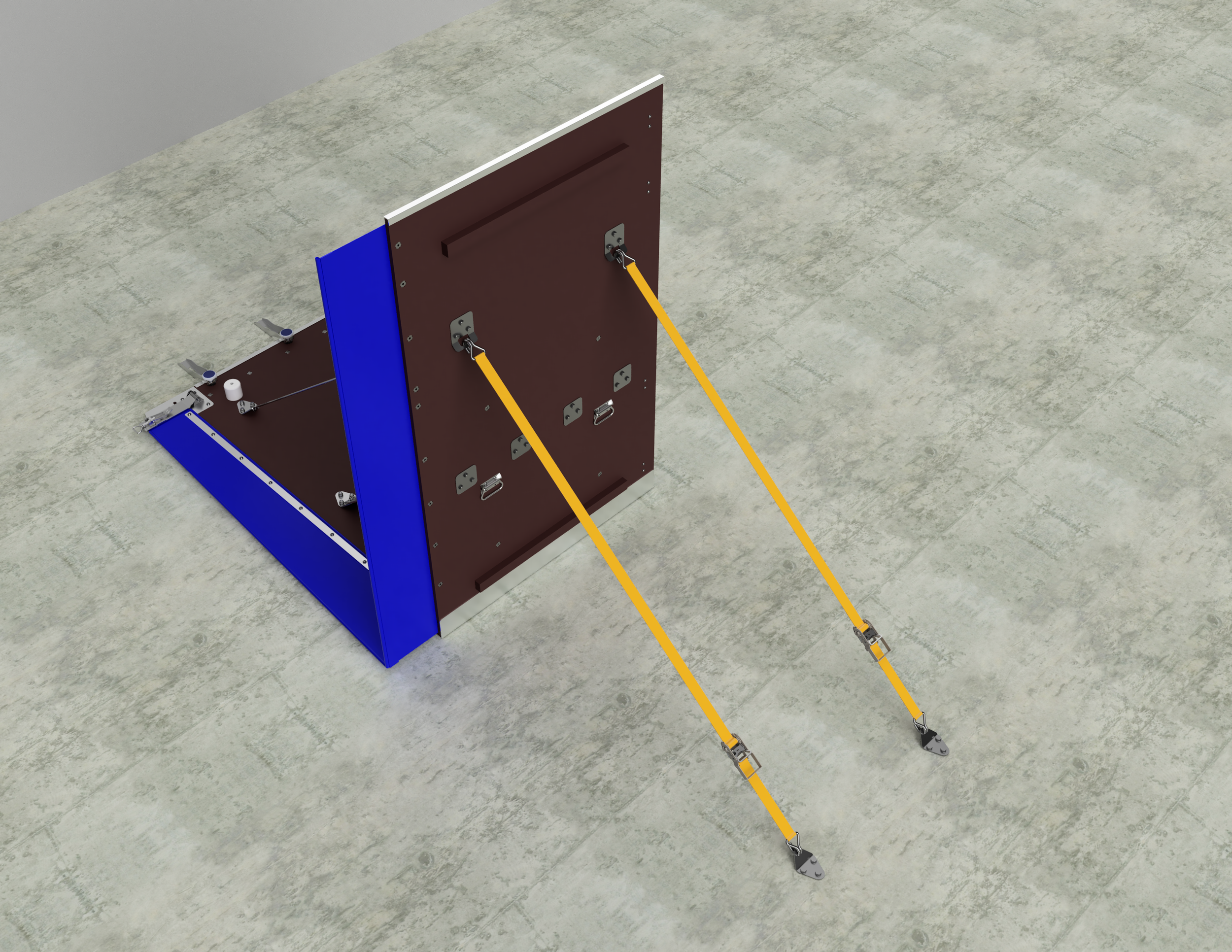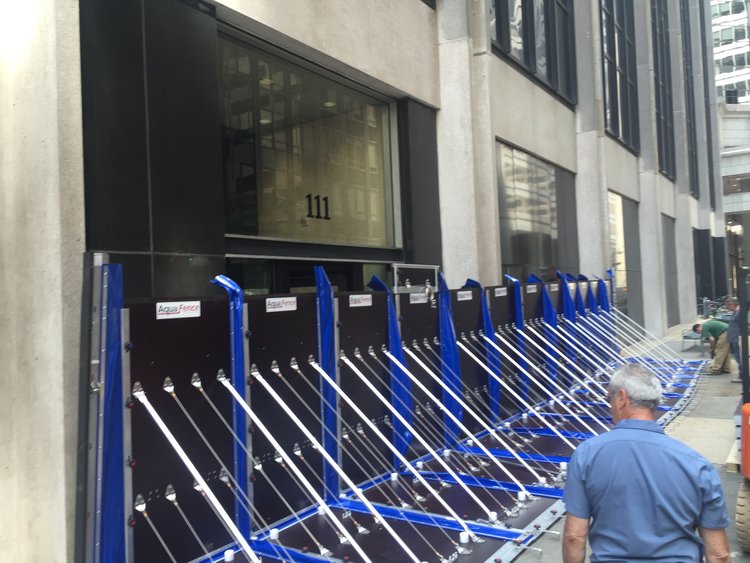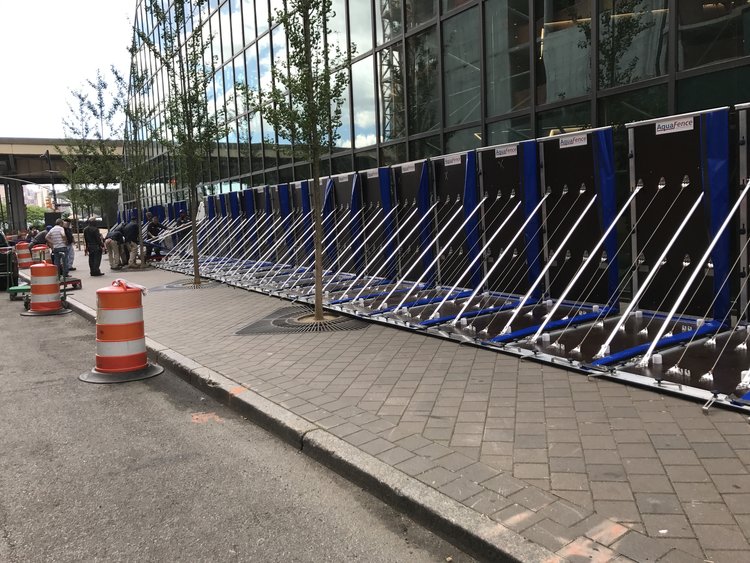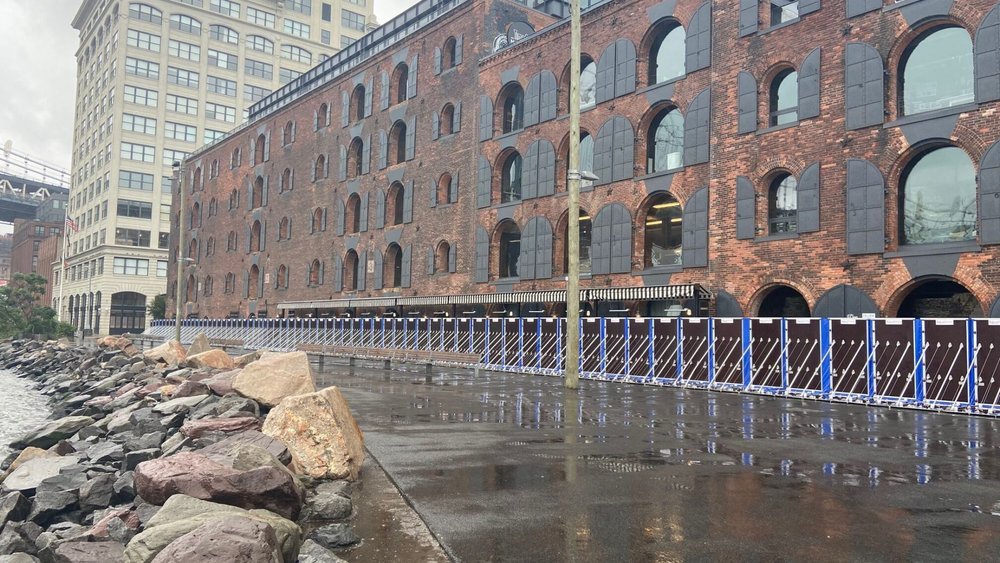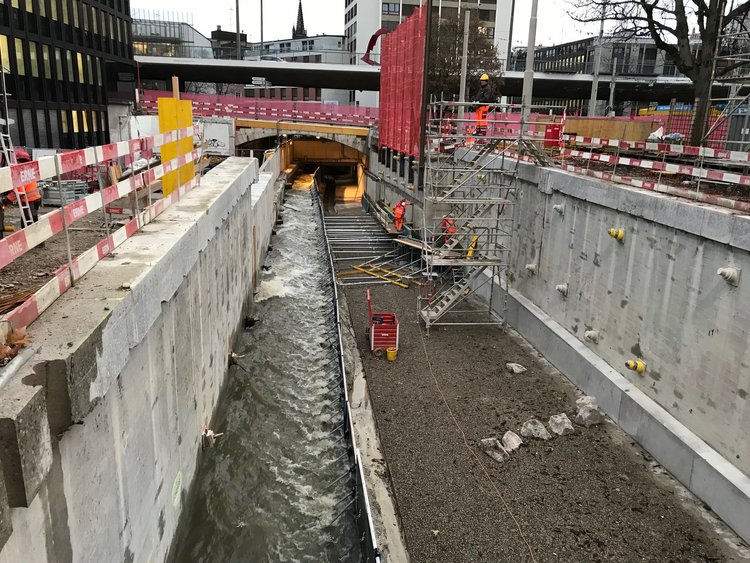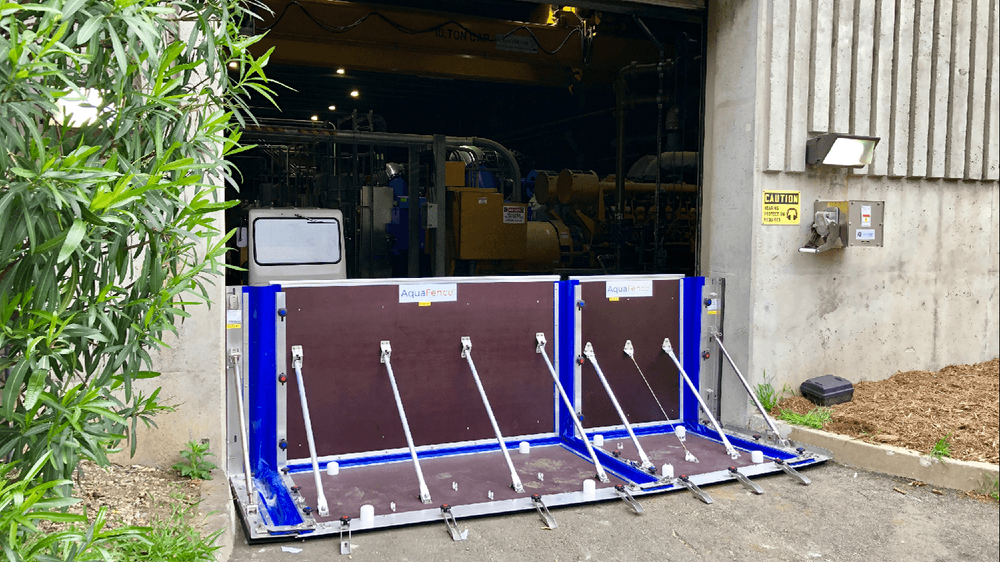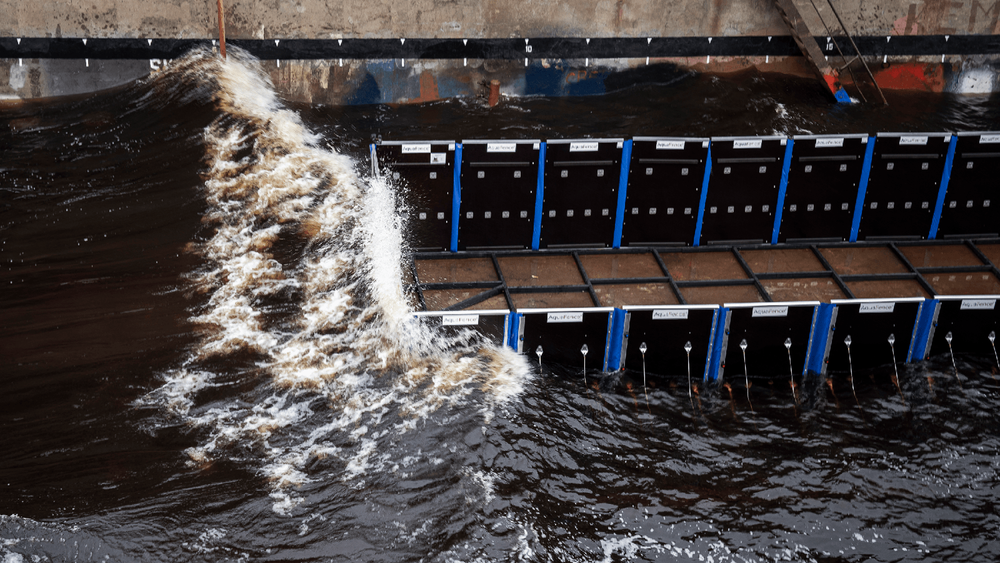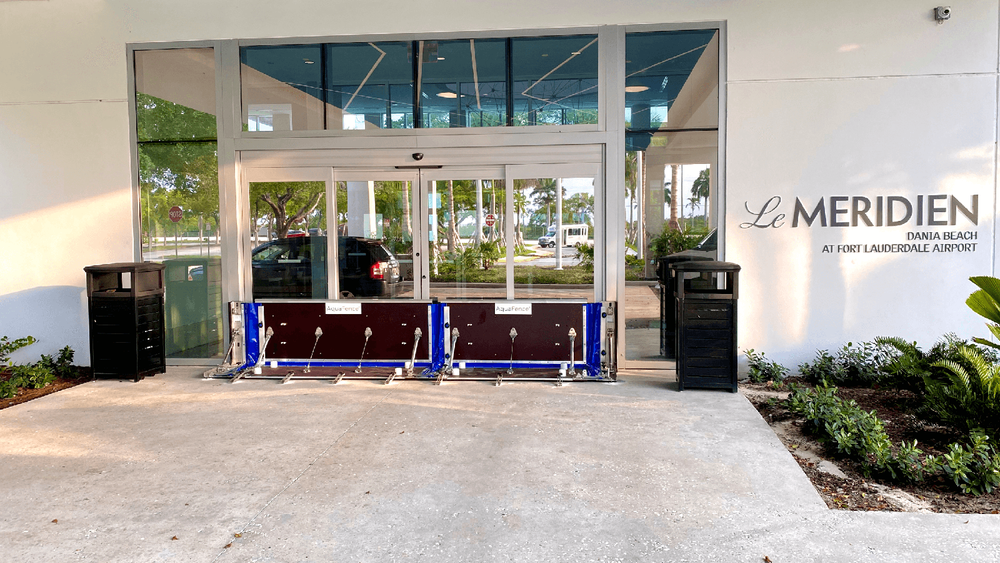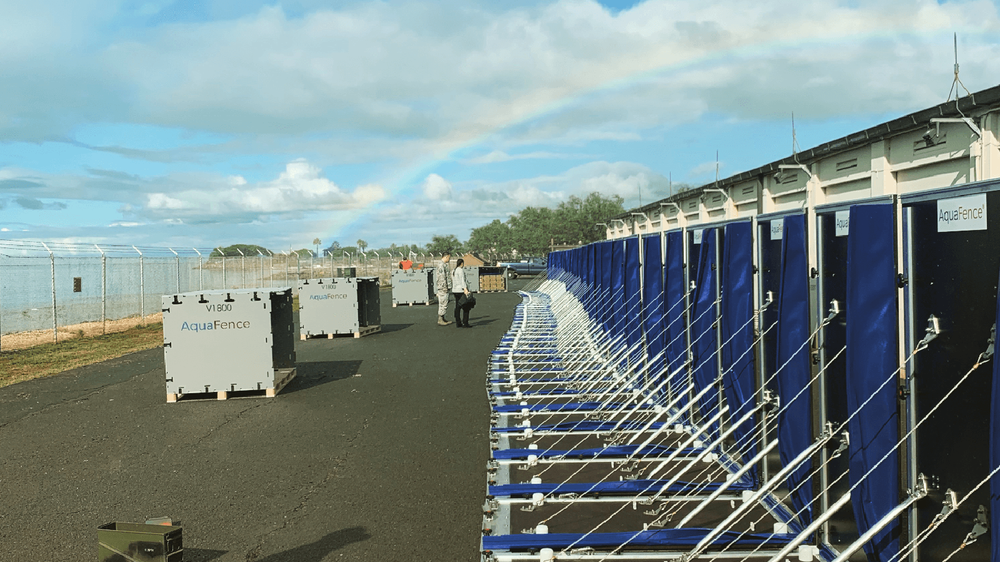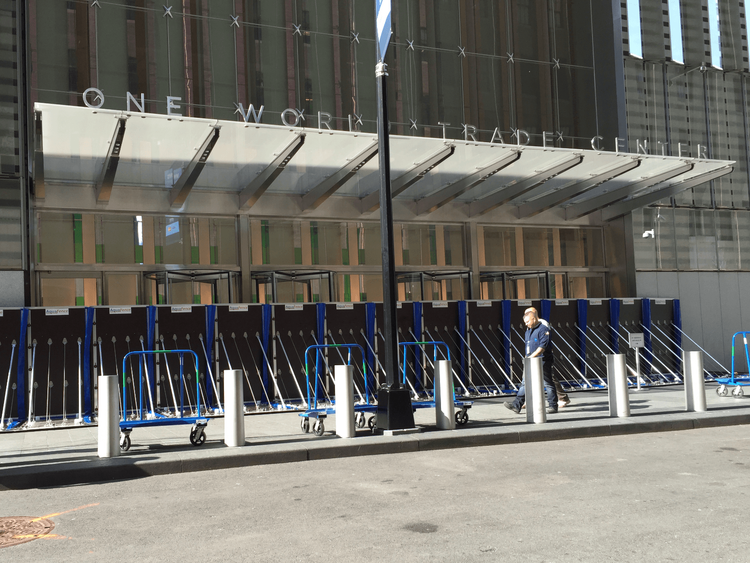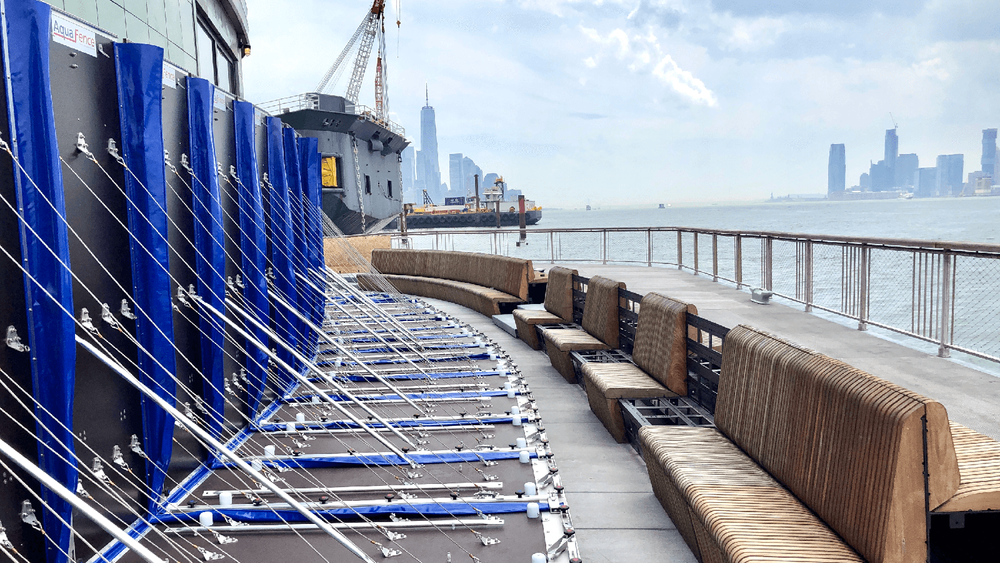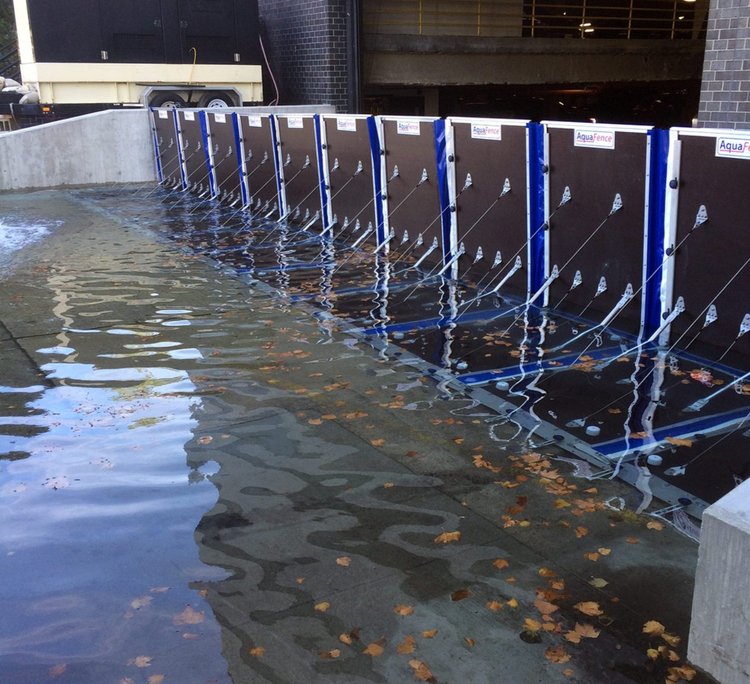AquaFence FloodWall is a leading, FEMA compliant and ANSI/FM 2510 certified, deployable flood barrier, used to secure commercial, municipal and industrial properties throughout the world.
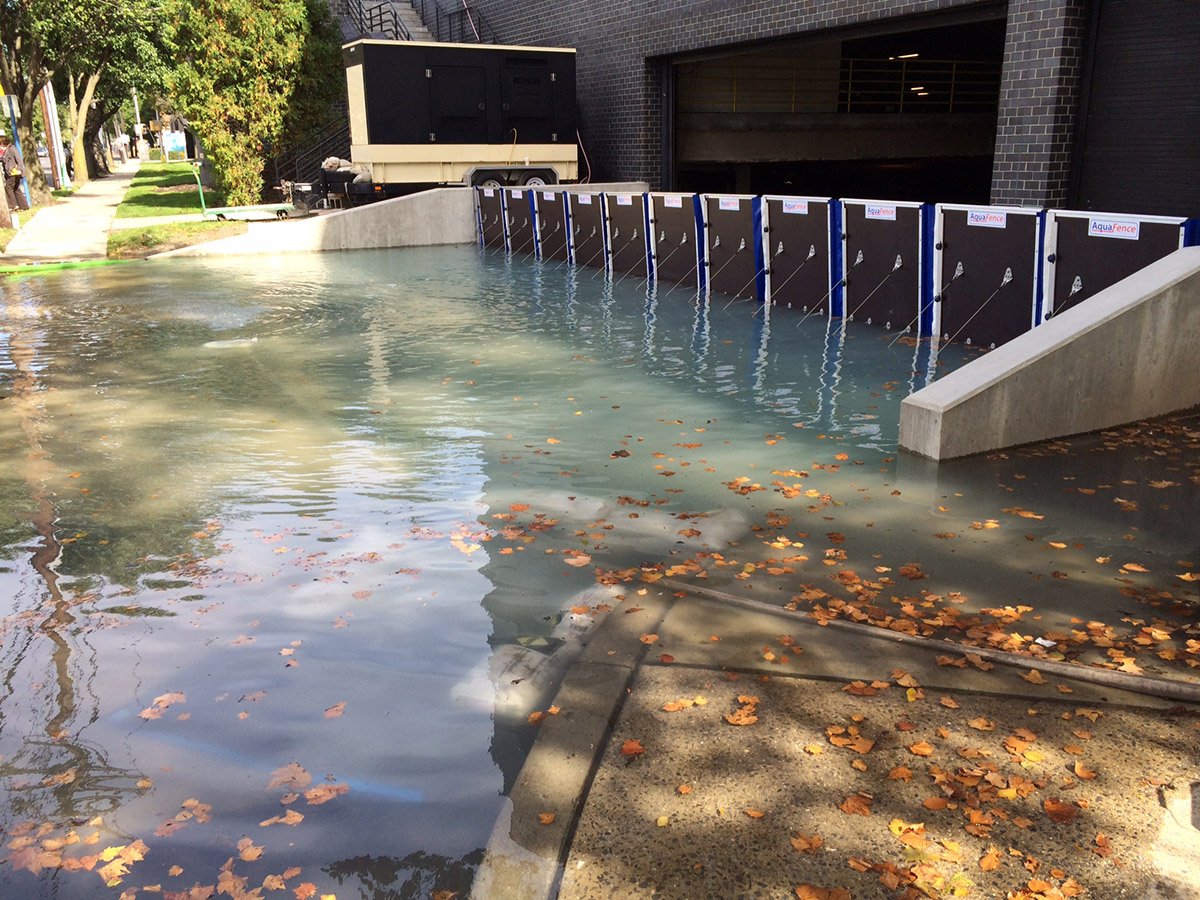
Floodwall

Perimeter Protection
FloodWall can surround buildings facilities, critical assets, or multiple blocks, without any contact to the building itself. In most urban environments, the system can be used without any advanced site work
Water Diversion
FloodWall can be used to divert water away from a construction or maintenance site or to divert overflowing rivers away from towns, cities or regions
Integrated Protection
A drop-in-place flood shield solution that is customized to secure specific exposures of buildings or properties. These systems range from single openings to entire buildings
Standard Heights
AquaFence FloodWalls can transition between heights and range from 2.5 ft to 9 ft (0.75 m to 2.7 m)

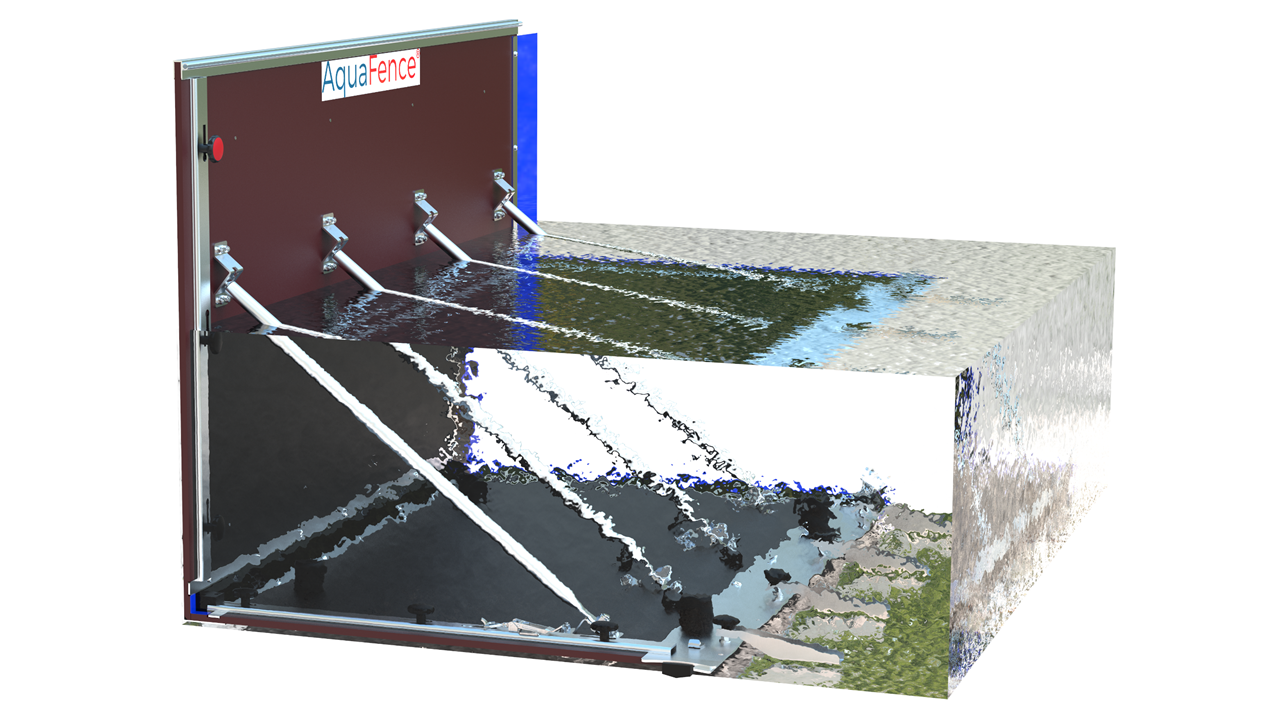
No Fill Material
The AquaFence FloodWall harnesses the floodwater weight to create a self stabilized design. This allows the barrier to be deployed without any structural alterations to the building or hardscape and without the need for fill mass such as sand. As the floodwater increases, the system is strengthened.
Mobile and Fast to Deploy
The FloodWall is easy to use, fast to deploy, has no loose parts and can be moved between multiple locations depending on need . The barriers are deployed before imminent flooding and removed after the flood threat is gone, leaving little to no trace of the system behind.
Compared to sandbags FloodWall is 375 times more labor efficient. Taking one example from US we saw that a 500-meter-long perimeter required 2000 people 12 hours of deployment.
With FloodWall the same 500-meter-perimiter was deployed using 16 people for a 4-hour deployment.
That is 24 000 man-hours using sandbags versus 64 man-hours using FloodWall.
– Always ready when a flood is expected (or unexpected)


Excellent Safety Margins
Aquafence engineers and designs FloodWall based on the combined sum of hydrostatic loads, hydrodynamic loads and impact loads.
Reusable and Eco Friendly
After a flood event, simply rinse the FloodWalls before returning them to storage. This clean, no fill design lends itself to be stored, rapidly deployed, and removed without any waste creation. Certified re-usability more than 60 times.
Sandbags have a one-time use and are treated as contaminated waste after contact with flood water.
A 100-meter-long and 1.2-meter-high FloodWall perimeter is equivalent to 25 500 sandbags. The sandbags will generate 459 metric tons of contaminated waste after a flood, enough to fill 32 dump trucks. FloodWall provides a far more efficient and environmentally friendly solution with its 60 times reuse.


Modular System
The FloodWall modules can be interlinked to protect any perimeter or opening length. The connection in-between the modules are flexible and allows the interlinked modules to turn left/right and upward/downward, to move around objects or corners and to follow height differences in the terrain. The modules can also connect onto walls and climb over curbs
Egress & Staying Operational
FloodWall can be installed quickly with entry and egress points, which allows the user to act “last minute” or early, without operational disruption
FloodWall minimizes flood-related-shutdowns and associated costs, both human and capital, and provides a solution minimizing flood risk. FloodWall can be deployed while leaving entry/exit points in the perimeter, allowing traffic in and out of the facility area. Upon imminent flooding the entry/exit points are easily closed within minutes, and for “False alarms” facility operations continue normally while the FloodWall is demounted. It’s economically optimal to deploy FloodWall for all threat levels, because the costs of deployment are minuscule compared to expected flood loss. For such a feat other systems lack the required modularity or agility. This results in a user always prepared and never too late to act.
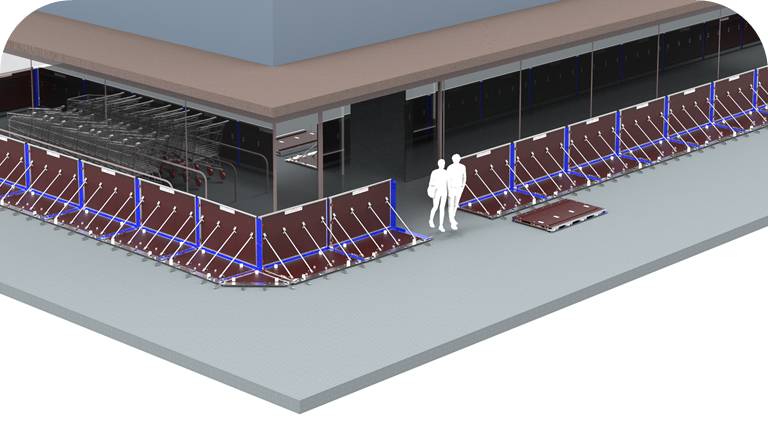
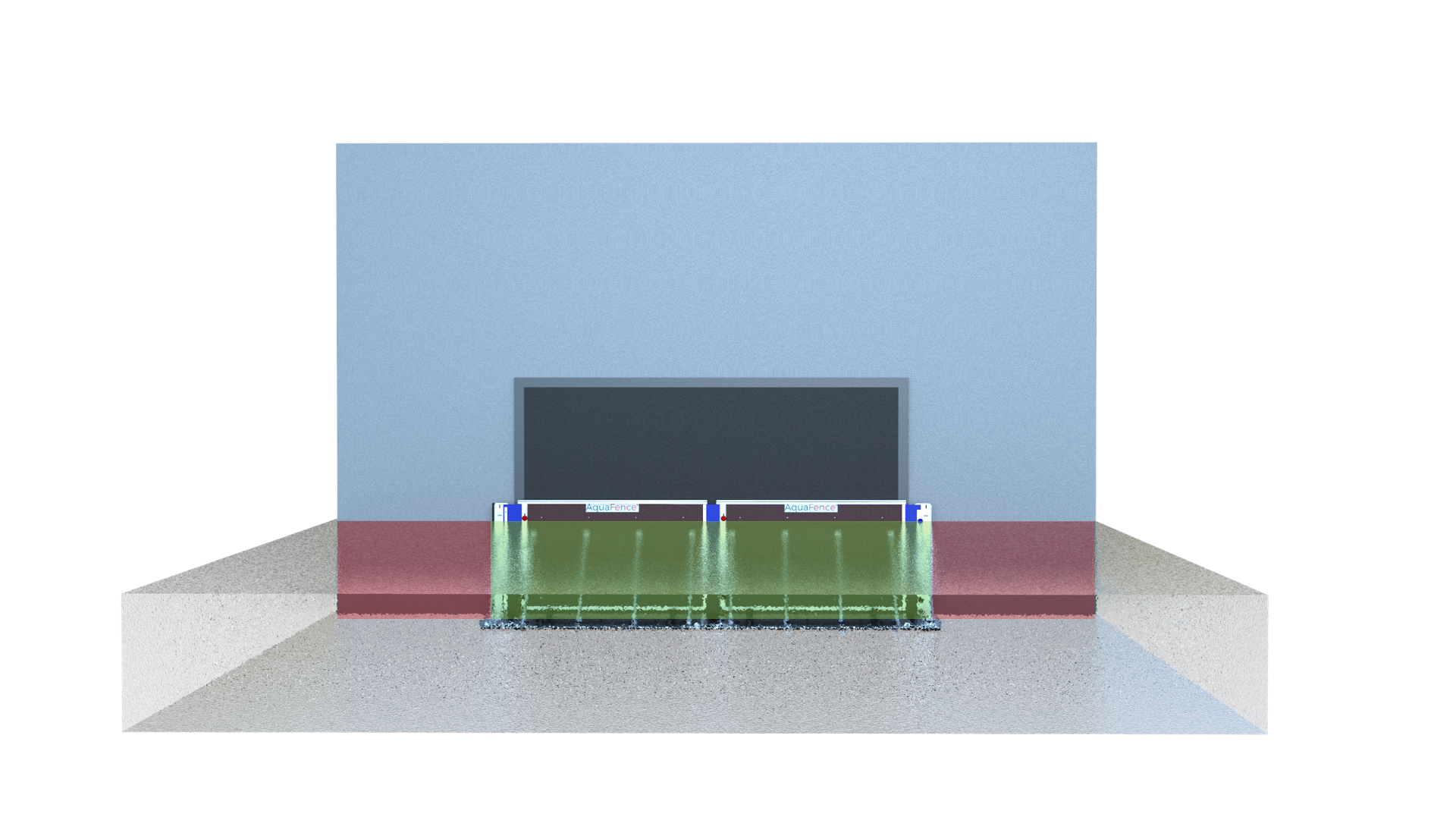
No Hydrostatic Loads Transferred
No hydrostatic loads transferred from the FloodWall to the building or structure.
Anchoring
Tie-down anchors are recommended for all FloodWall systems and help secure FloodWalls during dynamic conditions, such as wind and waves. When not in use, Anchor Holes are covered with caps.
FloodWall is compatible with concrete, asphalt and tapcon anchors

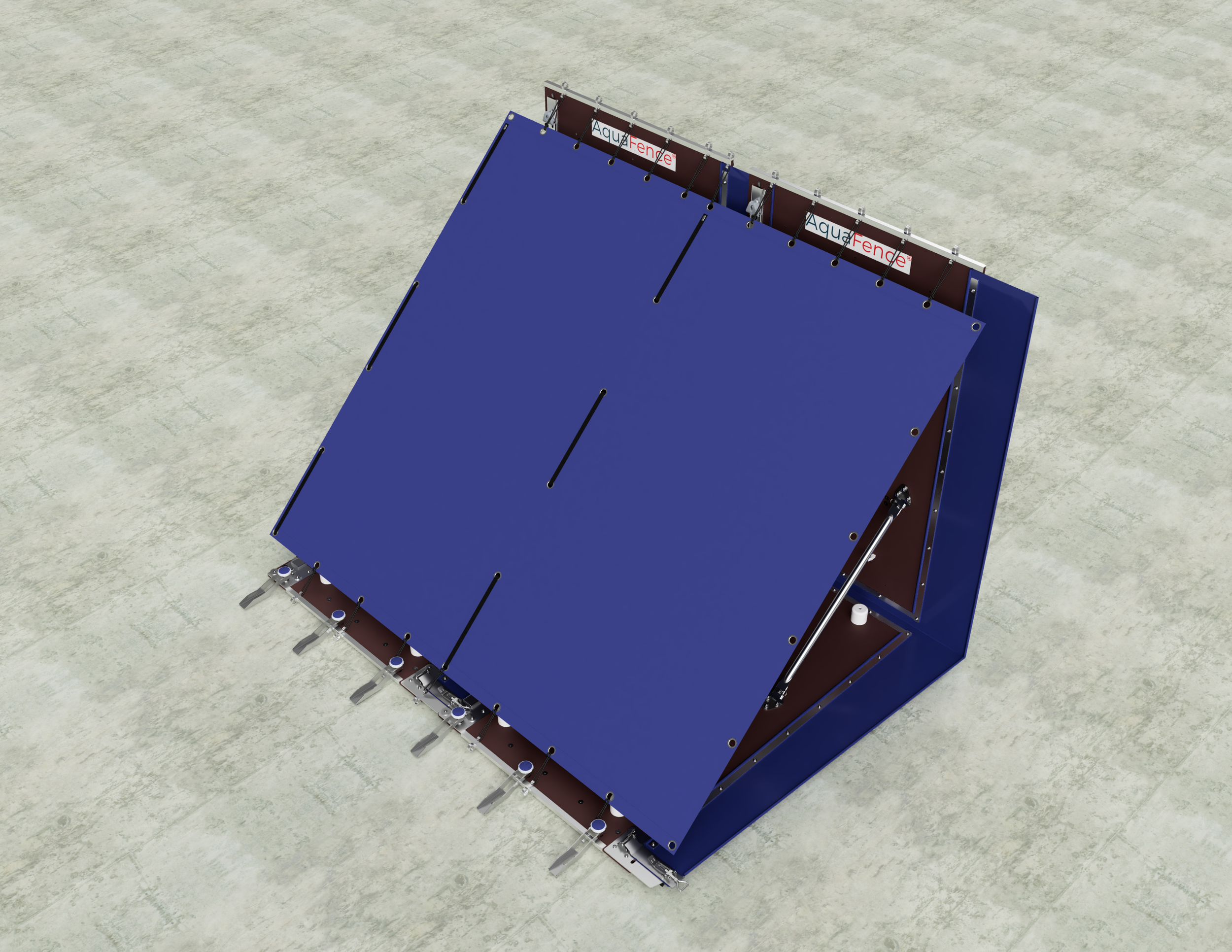
Debris Shield
Floodwater can carry logs and even cars and such debris have huge impact forces when colliding. The debris shield slows down the debris and allows FloodWall to absorb these impact loads
Wind Straps
FloodWall can be strapped to the ground to prevent the barriers from being lifted during extreme weather conditions such as hurricanes
